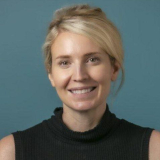Innovation and Commercialization Models for Life Sciences
By David Woods
What are the factors driving innovation in the life sciences forward, and what are those holding it back? Four panelists representing Pfizer, Safeguard Scientifics, Deloitte and Endo Pharmaceuticals tackled these topics at an Innovation Spotlight breakfast at the University City Science Center, Feb. 2. Their conclusion? While there are several factors in play, including the current focus of the healthcare system and the approach to risk, the common theme was economics.
In fact, the major element underpinning innovation is a fiscal one, said David Holveck, CEO of Endo Pharmaceuticals. Since our healthcare system is employer‐based, he noted, we have to look at data sets that are payer‐related. Such a ‘pinch point,’ he said, can lead to innovation targeted at economic benefits to the consumer. He warned that current US tax policies cramp innovation and force companies to look overseas.
Steven A. Romano, MD, vice president and medical affairs head in Pfizer’s Global Primary Care Business Unit, gave the big pharma perspective, explaining that larger companies, such as Pfizer, are able to manage risk by balancing investments across multiple disease areas and conditions. One promising area, but one which represents significant risk, is Alzheimer’s. The combination of exciting science and significant medical need make areas such as Alzheimer’s particularly attractive to big pharma, Romano explained. A particular development in life sciences innovation, he said, is the increasing trend towards partnerships. In addition to engaging with customers earlier in the process, he explained, big Pharma is also teaming up with payers and with other pharma companies, the latter as a way of risk‐sharing.
Paul Keckley, executive director of the Deloitte Center for Health Solutions, addressed the innovation question from the economic and policy perspective, noting that most analysts are not savvy enough to understand the innovation process, particularly in a climate in which there’s a deceleration of employer‐sponsored coverage and an increasing trend towards individual coverage. We have to show efficacy to payers, he said, “and mapping to the US payment situation will be intriguing.” Romano added that payers are demanding more evidence to cross the hurdles of early approval and challenges of reimbursement.
Keckley says the most likely outcome will be an a la carte bill with selected patent extensions and regulations on the insurance industry that do a little, not a lot, “which is what Joe Sixpack wants.” He further suggested a continued federal government push towards electronic medical
records for doctors who, if they aren’t using EMRs by 2015, will have their Medicare payments cut.
James A. Datin, managing director of Safeguard Scientifics, also picked up on the economic theme.
Pointing to the slow‐down in venture funding, Datin noted that his company reviews anywhere between 500 to 600 business plans a year in the life sciences, but typically only completes about 3‐5 transactions. Innovation could be jeopardized, he said, if venture funding continues to decrease. He added that in the present economic climate funders tend to be more risk‐averse, looking for reasons to turn down proposals by finding possible flaws in management, model, momentum, and market potential.
When audience member Richard Bendis of Innovation America pointed out that there’s nothing in the federal budget for life sciences innovation and challenged the panelists’ companies to put up $5 million each to stimulate early stage investment, Datin pointed out that 40% of VC dollars go to California and that local universities are far less proactive in life sciences innovation initiatives than are, say, Stanford and MIT.
The consensus, teased out by moderator Chris Satullo of WHYY: listening more closely to customers; lowering taxes on pharma and venture capital; recognizing that there is a tidal wave in the regulatory world; streamlining the operations of the FDA, which approved only 26 drugs last year and is about to enter post‐market surveillance, food safety and tobacco; and demonstrating value.
Overall, though, it’s clear that what will drive innovation in the health sciences is strategic funding and calculated risk.
The Innovation Spotlight breakfast was presented by Pearson Partners International, HealthLeaders InterStudy, a Decision Resources Company and the Science Center.
To subscribe to the Science Center’s e‐newsletter, email info@sciencecenter.org.
To visit the Science Center’s website, go to www.sciencecenter.org.
